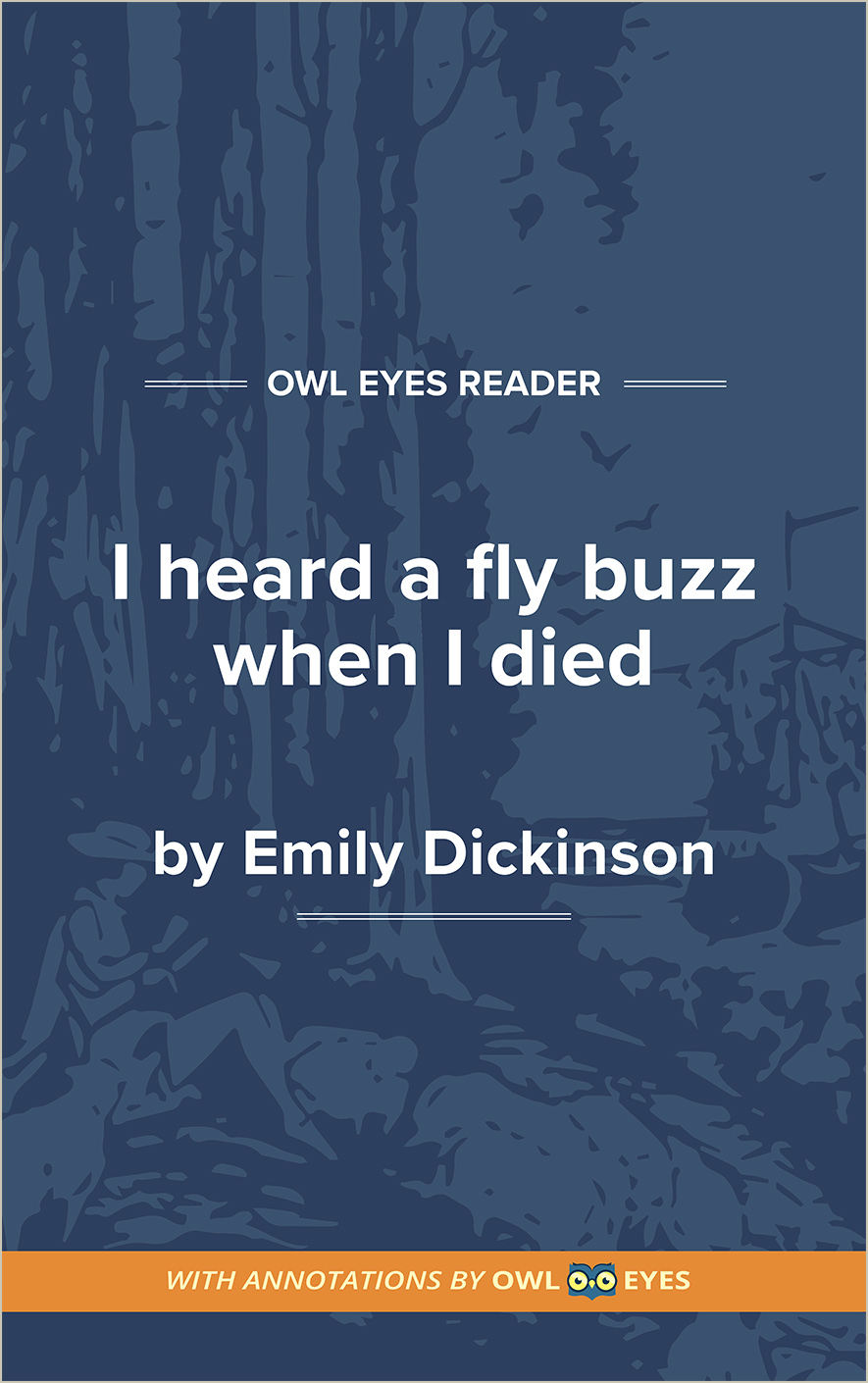Analysis Pages
Summary
This poem relies upon the poetic devices known technically as synesthesia (use of one sense to describe the workings of another) and paronomasia (wordplay). The predatory fly, functioning as in poem 187, waits to claim a corpse. The room is still, but this stillness resembles the interval between the heavings of a storm. Eyes had cried all they could; the patient, who is speaking, is beyond willing life, though she has willed her “Keepsakes.” The language is both theological and legal: “when the King/ Be witnessed—/ in the Room—.” Then, hesitantly but unmistakably, the fly interposes itself between the dying speaker and the light. Its buzz is “Blue—uncertain stumbling.” The windows fail, and the speaker cannot “see to see—.”
Characteristically, there is no enlightenment at the moment of death, merely a failing of the human objects designed to admit light. Thus, human sight does not allow human understanding. Dickinson once wrote to Higginson, using her distinctive capitalizations, that, “The Ear is the last Face We hear after we see.” Clearly, she identifies the “eye” with the “I.” The King is present to witness the death, but it remains a legal transaction. Neither he nor the speaker have the will to alter things, beyond ensuring that the material objects willed fall to the wills of their new owners.

